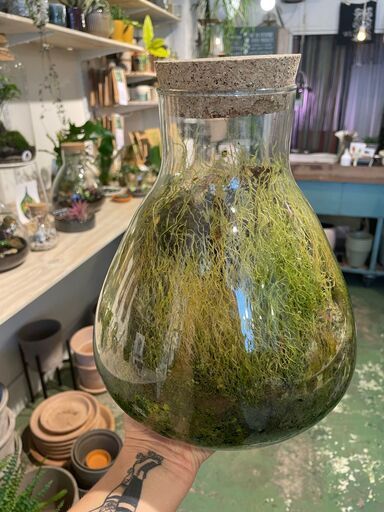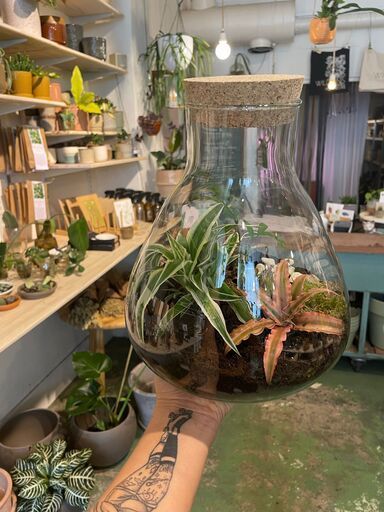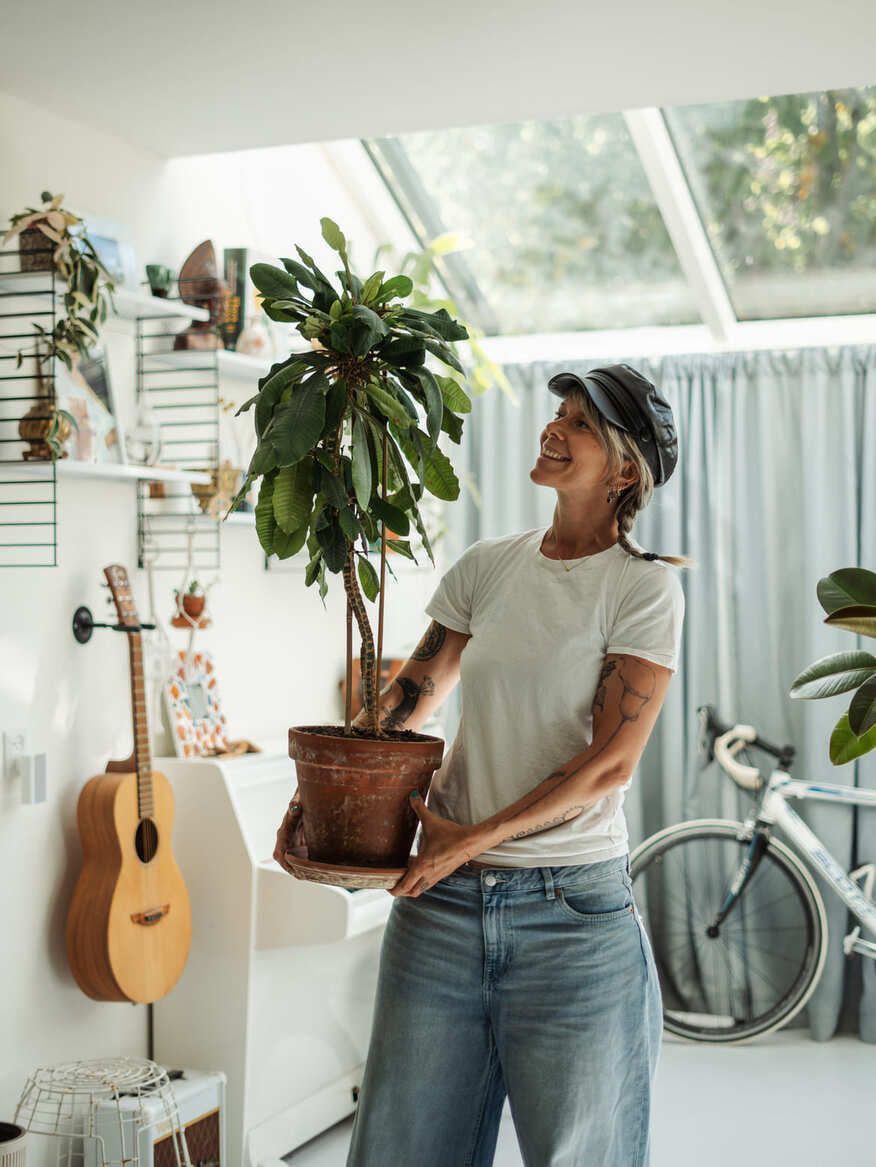The do's and don'ts of terraria by Studio Wendel
How to keep YOUR terrarium alive and HAPPY?
You bought a lovely terrarium. The salesperson told you it was self sustaining, so you didn't have to do anything about it. Not even water the plants!
But after some time the terrarium is clearly not looking well. The moss starts to turn yellow, or maybe it is overgrowing the whole thing and you don't see all the other gorgeous plants anymore. What to do? Read this blog for all tips, tricks and troubleshoots, and your terrarium will thrive again!

Terrarium trouble-shooting tips and tricks:
First, check the placement. Was the spot very sunny and/or warm, you could have created a green house effect and the plants were growing out of control. A terrarium needs a spot in the shadow, preferably a north facing window, where there is no direct sunlight.
Turning your terrarium every now and then is a really good way to make the plants grow evenly, especially. when the terrarium is standing in a corner. Some plants grow faster than others, so you can also do some maintenance by cutting some plants a bit shorter (maybe even making cuttings to put in another terrarium!). But please don't do that too often, the air pressure inside the terrarium is different from the 'outside world', and you can really mess the perfect balance that was created inside, or insert bacteria. Make sure your hands are washed and the instruments you work with are clean. It is always good to leave the terrarium open for 24h after you worked with it, to let it breathe a bit. Add another spray of water before closing, and let the balance settle again.
Another important thing is the moisture level. Sometimes the soil was too dry when you bought it, or the cork/lid wasn't fully sealing the terrarium and over time there has been some moisture loss through evaporation. You can easily tell if that is the problem when the soil is light brown, the plants stopped growing or are kind of droopy, or if there is no dew on the inside of the glass, ever. You can solve this by adding more moisture to the terrarium. Not by pouring in a full glass, but by spraying just a tiny bit of water in it. Preferably rain water, or water that has been cooked to remove the calcium. If you don't have a spray bottle, just dip your fingertips in the water and sprinkle some drops in the terrarium like that. When a terrarium looks more like a desert you probably need to spray around 4 sprays, but do it step by step. You can always add more, removing moisture is harder.
If there was too much water in the terrarium, the plants start to rot. A little bit of rot is not a problem, sometimes leaves stick to a dewy spot on the glass and start to rot, but when the soil is too wet the whole terrarium starts rotting. I had this problem once when a dear neighbour watered my plants ánd terrarium when we were on a holiday.. Oops! When this is the case (you can tell by sticking your nose in and smell...) you can help let the sun evaporate the water bit by bit, by removing the lid for 24 hours and putting it on a warm/sunny spot. You can repeat that process for a few days. But if that doesn't work enough, you can try if you can buy little critters from a specialized pet store or website, called 'springtails'. They love rotting material and start cleaning your terrarium for you!
Remember, a terrarium that is in perfect balance, has condensation on one side of the glass (mostly on the coldest side, for example the side next to a wall), on the warmest part of the day. That is a good indication the moisture level is perfect! When the whole terrarium is kind of foggy all over, leave the terrarium open for 24h.
But sometimes all criteria are perfect and still a plant inside your terrarium dies. This is also a part of nature, and just happens. You don't necesarily have to do anything, it will only add to the nutrition of the soil over time. But you can also remove the plant and add a new one! Use plants that are suitable for terraria, like asparagus, calathea, moss, chlorophytum, chamaedorea elegans, cryptanthus or ficus pumila to name a few. Make sure your hands/instruments are clean, remove the soil that came with the new plant, and add a little bit of moisture (one spray).

There is one problem that is really hard to overcome. That is when the soil gets little white grains in them (some sort of fungus). You can try to help remove that with the bugs i mentioned earlier (springtails), or even adding a few isopods might do the trick. But this one is tricky.
I hope this blog will help you save your beloved terrarium, because when it is happy and healthy, it is a lovely and aesthetically pleasing green artpiece to have in your home!
And when nothing seems to work, you can always reach out to me to let me try and revive it, or I can make a competely new one when absolutely necessary! Good luck!
Green greetings,
Studio Wendel
